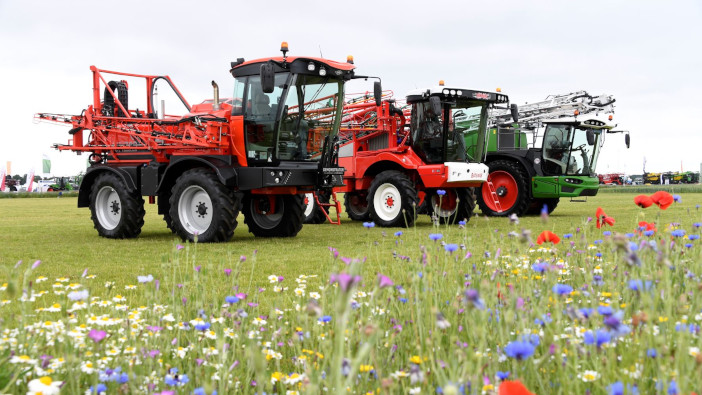Visitors to this year’s Cereals Event will see the latest innovations and techniques to help them push ahead with their businesses.
Solar powered Seed-n-Weed robot
A fully autonomous, solar-powered robot capable of precision drilling and weeding will be in action in the Robotics, Automation and Drone demo area. Offering pesticide-free weed control with zero fuel bills, the FarmDroid, distributed by Opico, is the brainchild of two Danish farmers.
It uses ultra-accurate GPS to record exactly where it places each seed. On each subsequent weeding pass, it has no need to identify what’s a weed and what’s not. It knows where the crop plants should be and works around them. Hoe shares run between each row and blades slice off anything between each crop plant in the row.
This approach means that it doesn’t need to employ banks of high-definition cameras and complex computers to identify and target weeds. It also means the machine can start the weeding process before the crop has emerged.
“We believe robotics will form the backbone of the next major step in technological development for agriculture,” says Opico managing director James Woolway. “FarmDroid has come up with a unique solution that is suited to large and small-scale farming systems.”
AgBot demo areas
AgXeed, Cereals Innovation & Tech sponsor, will have two demo areas near the northern entrance demoing its AgBots. The AgXeed AgBot 2.055W4 will have its first public showing at Cereals 2022. Also being demoed will be the AXeed AgBot 5.115T2.
Bespoke disease forecasting
Cereals visitors can now make use of super-local weather indicators combined with disease forecasting to make more efficient use of control measures like fungicide applications.
Sencrop, which is known for its highly accurate smart local weather stations, has joined forces with the Information System for Integrated Plant production (ISIP) to provide bespoke disease forecasting for farmers, based on pooled and individual data.
Considering local temperature, humidity and precipitation, the system will predict risk levels for diseases affecting winter wheat, barley, rye, triticale and spring barley between 15 February and 30 June. This will enable farmers to react to times of high disease pressure and protect crop quality and yield, says Lucie D’Haene, product manager and agronomist at Sencrop.
“Farmers can connect their individual crops to local weather data via their weather station and app, to receive crop-specific information and risk calculations.”
Latest grain drying technology
With ever increasing inputs, farmers need to increase the value of their outputs and McArthur Agriculture’s complete grain processing and storage systems do just that.
Its stand will feature a Mecmar FSN 15t mobile grain drier, showcasing Mecmar’s latest developments in remote monitoring technology. The new Mecmar remote monitoring system allows farmers to view the status of their grain drying system in real-time on their mobile or tablet. Additionally, company support technicians can monitor fault reports and make adjustments to the system configuration and parameters remotely.
There will also be a working display of a Sukup grain drying silo showing visitors who may be new to the concept of drying silos, and how they work.
“Our post-harvest systems ensure that once harvested, crops – whether for food or feed – are processed and stored so that they remain in the best possible condition to make the best price,” said managing director John McArthur.
Flagship combine
Arable farmers looking to achieve the next level in harvesting performance can look around John Deere’s flagship X9 combine, which will be on its stand.
These machines are designed to help large-scale farmers harvest more tonnes per hour and more hectares per day, even in tough conditions.
“We have lined up a fantastic range of static and moving demonstrations of tractors, sprayers, combines, drills, and technical innovations,” said technical marketing manager Chris Wiltshire.
“The future of efficient, profitable agricultural production is going to be heavily dependent on boundary-pushing technological advances. This year’s stand is packed full of examples of fantastic machinery that can make a big difference to farm businesses.”
Regenerative agriculture tips
Farmer-led BASE-UK will be offering practical advice on making the move to a regenerative no-till system, breaking it down into five steps. These are: Have a plan, build soil carbon, minimise soil disturbance, keep the soil covered, use rotations and integrate livestock to add diversity.
“We have learnt as we’ve gone along,” said BASE-UK chairman Edwin Taylor, who farms in Northumberland. “Where mistakes have been made, we’ve been able to tap into expertise from others in the group and keep making progress.”


